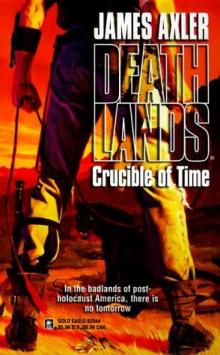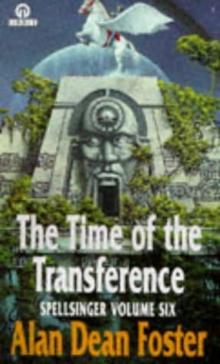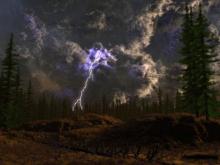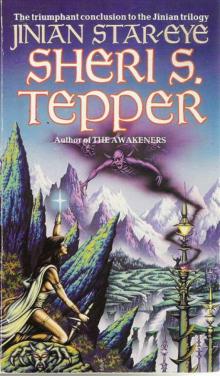- Home
- neetha Napew
Humans Page 10
Humans Read online
Page 10
Mary arrayed all the pairs, photographed them, and printed out the photo on an Epson inkjet printer. She then started labeling the pairs, beginning with the longest, and working her way to the shortest: 1, 2, 3...
It was straightforward work, the kind of exercise she’d put her cytogenetics students through each year. Her mind wandered a bit while she was doing it: she found herself thinking about Ponter and Adikor and mammoths and a world without agriculture and...
Damn!
She’d obviously screwed up somehow, since Ponter’s X and Y chromosomes were the twenty-fourth pair, not the twenty-third.
Unless...
My God, unless he actually hadthree chromosome 21s-in which case he, and presumably all his people, had what in her kind produced Down’s syndrome. That made some sense; those with Down’s had an array of facial morphologies that differed from other humans, and-
Good grief,thought Mary,could it be so simple? Down’s sufferers did have an increased incidence of leukemia...and wasn’t that what Ponter said had killed his wife? Also, Down’s syndrome was associated with abnormal levels of thyroid hormones, and those were well-known to affect morphology-especially facial morphology. Could it be that Ponter’s people all had trisomy 21-one small change, manifesting itself slightly differently in them than it did inHomo sapiens sapiens, accounting for all the differences between the two kinds of humans?
But no. No, that didn’t make sense. Principal among Down’s effects, at least inHomo sapiens sapiens, was anunder development of muscle tone; Ponter’s people had exactly the opposite condition.
And, besides, Mary had spread out an even number of chromosomes in front of her; Down’s syndrome resulted from an odd number. Unless she’d accidentally brought some chromosomes in from another cell, it appeared that Ponter did indeed have twenty-four pairs, and...
Oh, my God,thought Mary.Oh, my God .
It was evenmore simple than she’d thought.
Yes, yes,yes!
She had it!
She had the answer.
Homo sapiens sapienshad twenty-three pairs of chromosomes. But their nearest relatives, at least on this Earth, were the two species of chimpanzees, and-
And both species of chimps hadtwenty-four pairs of chromosomes.
GenusPan (the chimps) and GenusHomo (humans of all types, past and present) shared a common ancestor. Despite the popular fallacy that humans had evolved from apes, in fact, apes and humans werecousins . The common ancestor-the elusive missing link, not yet conclusively identified in the fossil record-had existed, according to studies of the genetic divergence between humans and apes, something like five million years ago in Africa.
Since chimps had twenty-four pairs of chromosomes and humans had twenty-three, it was anyone’s guess as to what number the common ancestor had possessed. If it had had twenty-three, well, then, sometime after the ape-human split, one chromosome must have become two in the chimp line. If, on the other hand, it had had twenty-four, then two chromosomes must have fused together somewhere along theHomo line.
Until today-until right now, until this very second-no one on Mary’s Earth had known for sure which scenario was correct. But now it was crystal clear: common chimps had twenty-four pairs of chromosomes; bonobos-the other kind of chimp-had twenty-four as well. And now Mary knew that Neanderthals also had an even two dozen. The consolidation of two chromosomes into one had happened long after the ape-human split; indeed, it had happened sometime after theHomo branch had bifurcated into the two lines she was now studying, only a couple of hundred thousand years ago.
That was why Ponter’s people still had the huge strength of apes, rather than the puniness of humans. That was why they had ape physiognomy, with browridges and no chins. Genetically, theywere apelike, at least in chromosome count. And something about the fusing of two chromosomes-it was numbers two and three, Mary knew, from studies of primate genetics she’d read years before-had caused the morphological differences that gave rise to the adult human form.
Indeed, the particular cause of the differences was easy enough to identify: it was neoteny, the retention into adulthood of childhood characteristics. Baby apes, baby Neanderthals, and baby Gliksins all had similar skulls, with vertical, ridgeless foreheads, and no particular protrusion of the lower face. As the other kinds grew, their skull shapes changed. But Mary’s kind alone retained their childlike crania into adulthood.
But Ponter’s peopledid mature cranially. And the differing chromosome count might be the cause.
Mary pressed her two hands together in front of her face. She had done it! She had found what Jock Krieger wanted, and-
And...my God.
If the chromosome counts differed, then Neanderthals and her flavor ofHomo sapiens weren’t just different races, or even just subspecies of the same species. They were fully separate species. No need to double up the “wisdom” part inHomo sapiens sapiens to distinguish Mary’s kind from Ponter’s, for Ponter’s people couldn’t possibly beHomo sapiens neanderthalensis . Rather, they were clearly their own specific tax on,Homo neanderthalensis . Mary could think of some paleoanthropologists who would be thrilled by this news-and others who would be extremely pissed off.
But...
But...
But Ponter belonged to another species! Mary had seenShowboat when it was on stage in Toronto; Cloris Leachman had played Parthy. She knew that miscegenation was once a big issue, but...
But miscegenation wasn’t the appropriate term for a human mating with something from outside her own species-not that Ponter and Mary had done that, of course.
No, the appropriate term was...
My God,thought Mary.
Was bestiality.
But...
No, no.
Ponter wasn’t a beast. The man who had raped her-Mary’s conspecific, a member ofHomo sapiens -had been a beast. But Ponter was no animal.
He was a gentleman.
A gentle man.
And, regardless of chromosome count, he was a human being-a human being she was very much looking forward to seeing again.
Chapter Thirteen
Finally, after three days, the specialists from the Laboratory Centre for Disease Control and the Centers for Disease Control and Prevention-the comparable U.S. agency-agreed that Ambassador Tukana Prat and Envoy Ponter Boddit were free of infection and could leave quarantine.
Ponter and Tukana, accompanied by five soldiers and Dr. Montego, trudged down the mining tunnel to the metal-cage elevator, and made the long ride to the surface. Apparently, word had preceded them that they were on the way up; a large number of miners and other Inco workers had assembled in the huge room up top that contained the elevator station.
“There is a crowd of reporters waiting in the parking lot,” said Hélène Gagné. “Ambassador Prat, you’ll need to make a brief statement, of course.”
Tukana lifted her eyebrow. “What sort of statement?”
“A greeting. You know, the usual diplomatic thing.”
Ponter had no idea what that meant, but, then again, it wasn’t his job. Hélène led Tukana and him out of the large room and through the doors into the Sudbury autumn. It was at least two degrees hotter than the world Ponter had left behind, maybe more, but, of course, three days had passed while they were underground; the difference in temperature didn’t necessarily mean anything.
Still, Ponter shook his head in amazement. He’d never exited this place while conscious before; the only previous time he’d come up from the mine, he’d been knocked out with a head wound. But now he had a chance to really see the giant mining site, the great tear in the ground these humans had made; the huge stretches of land from which all trees had been cleared; the vast-“parking lot,” they called it, covered with hundreds of personal vehicles.
And the smell! He reeled at the overpowering stench of this world, the nauseating reek. Adikor’s woman, Lurt, had explained the likely sources of the odors, based on Ponter’s descriptions of them: nitrogen d
ioxide, sulfur dioxide, and other poisons given off by the burning of petrochemicals.
Ponter had warned Tukana about what to expect, and she was discreetly trying to cover her nose with her hand. Still, as much as he fondly remembered the people here, Ponter had forgotten-or suppressed-his memories of what a truly awful job they had done of looking after their version of the planet.
Jock Krieger sat at his desk, surfing the two Webs-the public one, and the vast array of classified government sites, available over dedicated fiber-optic lines, that only those with appropriate security clearance could access.
Jock had never liked it when something came up that he didn’t understand; the only thing that made him feel a lack of control was ignorance. And so he was trying to rectify that by searching for information about geomagnetic collapses, especially with the word from Sudbury that apparently such things happened very quickly.
Jock had expected there to be thousands of Web pages devoted to this topic, and although all the news sites had cobbled together something in the last week, mostly regurgitating the same three or four “expert” opinions, there were really very few concrete studies of this phenomenon. Indeed, about half the hits he found on the World Wide Web were so-called creation scientists trying to explain away the evidence for prehistoric geomagnetic reversals, apparently because the sheer number of them would have taken up too much time if the Earth was only a few thousand years old.
But a citation for one real paper caught Jock’s eye, a 1989 piece fromEarth and Planetary Science Letters called “Evidence Suggesting Extremely Rapid Field Variation During a Geomagnetic Reversal.” The authors were listed as Robert S. Coe and Michel Prévot, the former from the University of California at Santa Cruz, and the latter from theUniversité des Sciences et Techniques at Montpelier-the one in France, Jock presumed, rather than the one in Vermont. UCSC was definitely a legit institution, and the other one-a few clicks of the mouse-yes, it was on the up-and-up, too. But the damn article wasn’t online; like so much of the world’s wisdom pre-1990, apparently no one had bothered to computerize it. Jock sighed. He’d have to go to an actual library to get a copy.
Mary went down the corridor, then down the staircase, to Jock Krieger’s office on the first floor. She knocked, waited for him to call out “Come in,” and then did just as he had said.
“I’ve got it,” said Mary.
“Well, then, keep your distance,” said Jock, closing his Web browser window.
Mary was too excited even to get the joke then, although it came to her later that day. “I’ve figured out how to distinguish Gliksins from Neanderthals.”
Jock rose from his Aeron chair. “Are you sure?”
“Yes,” said Mary. “It’s a piece of cake. Neanderthals have twenty-four pairs of chromosomes, whereas we have only twenty-three. It’s a glaring difference, as big on the genetic level as the difference between male and female.”
Jock’s gray eyebrows arched up toward his pompadour. “If it was that obvious, what took so long?”
Mary explained her misguided preoccupation with mitochondrial DNA.
“Ah,” said Jock, nodding. “Good work. Very good work.”
Mary smiled, but her smile soon faded. “The Paleoanthropology Society is having its annual meeting in a couple of weeks,” she said. “I’d like to present my Neanderthal karyotype there. Someone else is bound to make one sooner or later, but I’d like to get priority.”
Krieger frowned. “I’m sorry, Mary, but you’re under a non-disclosure agreement here.”
Mary was gearing up for a fight. “Yes, but-“
Jock raised a hand. “No, you’re right. Sorry. It’s hard to get out of the RAND mode. Yes, of course, you can present your discovery. The world has a right to know.”
Hélène Gagné looked out at the hundreds of journalists who had gathered in the Creighton Mine parking lot. “Ladies and gentlemen,” she said, speaking into a microphone on a telescoping stand, “thank you for coming. On behalf of the people of Ontario, the people of Canada, and the people of the world, it’s my pleasure to welcome the two emissaries from the parallel version of Earth. I know some of you in the media already are acquainted with Dr. Ponter Boddit, who now has the title of ‘Envoy.’” She made a gesture at Ponter, and, after a moment, Ponter realized he should probably acknowledge it somehow. He lifted his right hand and waved enthusiastically which, for some reason, prompted amusement amongst the Gliksin journalists.
“And this,” continued Hélène, “is the ambassador, Ms. Tukana Prat. I’m sure she has a few words for us.” Hélène looked expectantly at Tukana, who, after some additional gesturing by Hélène, moved to the microphone.
“We are glad to be here,” said Tukana. She then politely backed away from the mike.
Hélène looked mortified, and quickly took Tukana’s place. “What Ambassador Prat means,” she said, “is that on behalf of her people, she is pleased to open formal contact with our people, and looks forward to a productive and mutually beneficial dialogue on matters of common concern.” She turned to Tukana, beseeching approval for these comments. Tukana nodded. Hélène went on. “And she hopes that her people and ours can find numerous opportunities for trade and cultural exchange.” She again looked at Tukana; the female Neanderthal at least didn’t seem inclined to object. “And she’d like to thank Inco, the Sudbury Neutrino Observatory, the mayor and council of the city of Sudbury, the government of Canada, and the United Nations, where she will be speaking tomorrow, for their hospitality.” She looked once more at Tukana, gesturing at the mike. “Isn’t that right?”
Tukana hesitated for a moment, then moved back to the microphone stand. “Um, yes. What she said.”
The journalists howled.
Hélène leaned close to Tukana and put a hand over the mike, but Ponter could hear her anyway. “We have got alot of work to do before tomorrow,” she said.
After Mary left his office, Jock Krieger looked out his window. He’d had his pick of office space, of course. Most would have opted for the lake view, but that meant looking north, away from the United States. Jock’s window faced south, but since the mansion housing the Synergy Group was on a spit of land, Jock’s view did include a lovely marina. He steepled his fingers in front of his face, stared out at his world, and thought.
Tukana and Ponter were both astonished by the Canadian Forces jet that took them to Ottawa. Although their people had developed helicopters, jet planes were unknown on the Neanderthal world.
After Tukana got over the shock of being airborne, she turned to Hélène. “I am sorry,” said the ambassador. “I believe I did not live up to your requirements earlier today.”
Hélène frowned. “Well, let’s just say that humans here expect a little more pomp and circumstance.”
Tukana’s translator bleeped twice.
“You know,” said Hélène, “a little more ceremony, some more kind words.”
“But you said nothing of substance,” said Tukana.
Hélène smiled. “Exactly. The prime minister is quite easygoing; you won’t have any trouble with him tonight. But tomorrow you’ll face the General Assembly of the United Nations, and they’ll expect you to speak at some length.” She paused. “Forgive me, but I thought you were a career diplomat?”
“I am,” said Tukana, defensively. “I have spent time in Evsoy and Ranilass and Nalkanu, representing the interests of Saldak. But we try to get to the point as quickly as possible in such discussions.”
“Don’t you worry about offending people by being brusque?”
“That is why ambassadors travel to these places instead of doing negotiations by telecommunications. It allows us to smell the pheromones of those we are talking with, and them to smell ours.”
“Does that work when you’re addressing a large group?”
“Oh, yes. I have had negotiations that have involved ten people or even eleven.”
Hélène felt her jaw dropping. “You will be speaking before eighteen hu
ndred people tomorrow. Will you be able to detect whether you are giving offense to anyone in a group that large?”
“Not unless the offended individual happens to be one of those closest to me.”
“Then, if you don’t mind, I’d like to give you a few pointers.”
Tukana nodded. “As I believe you would say, I am all ears.”
Chapter Fourteen
Mary had returned to her second-floor lab, and was now sitting in a black leather swivel chair, the kind of lush executive furnishings never found in a professor’s university office. She had swung around, away from her desk, and was looking out the large north-facing window at Lake Ontario. She knew Toronto was opposite Rochester, but even on a clear day she couldn’t see it from here; the far shore was beyond the horizon. The world’s tallest freestanding structure, the CN Tower, was right on Toronto’s lakeshore. She’d half hoped it, at least, would stick up over the curve of the Earth’s surface, but...
But she remembered Ponter saying that it had been a mistake to have his Companion implant, Hak, programmed with his dead wife’s voice. Instead of giving comfort, it had been a painful reminder of things lost. Perhaps it was just as well that Mary couldn’t see any part of Toronto through her window.
Seabreeze had been a delightful place in the summer, she’d been told, but now that fall was beginning, it was getting fairly grim. Mary had become partial to the news on WROC, the local CBS affiliate, but every weather forecast she had heard used the term “lake effect”-something she’d never encountered when she’d lived on the north side of the same lake. Toronto was reasonably snow-free in winter, but apparently Rochester got hammered with the white stuff, thanks to cool air moving down from Canada picking up moisture as it traveled over Lake Ontario.

 Zero City
Zero City Freedom Omnibus
Freedom Omnibus ACrucible of Time
ACrucible of Time Something MYTH Inc
Something MYTH Inc Forbidden Land
Forbidden Land Corridor of Storms
Corridor of Storms The Peytabee Omnibus
The Peytabee Omnibus Beyond the Sea of Ice
Beyond the Sea of Ice The Time Of The Transferance
The Time Of The Transferance EarthBlood
EarthBlood The Lexal Affair
The Lexal Affair The Web
The Web Slave Ship
Slave Ship Eternity Row
Eternity Row Planet Pirates Omnibus
Planet Pirates Omnibus Aztec
Aztec The Awakening
The Awakening Aztec Blood
Aztec Blood The Mystery of Ireta Omnibus
The Mystery of Ireta Omnibus Aztec Autumn
Aztec Autumn The Savage Horde
The Savage Horde Anti - Man
Anti - Man Deep Trek
Deep Trek Starfall
Starfall The Paths Of The Perambulator
The Paths Of The Perambulator Fool's Fate
Fool's Fate Jinian Stareye
Jinian Stareye Endurance
Endurance Spellsinger
Spellsinger Hybrids
Hybrids Beyond Varallan
Beyond Varallan Doona Trilogy Omnibus
Doona Trilogy Omnibus In th Balance
In th Balance Planerbound
Planerbound The Nightmare begins
The Nightmare begins Humans
Humans Son Of Spellsinger
Son Of Spellsinger